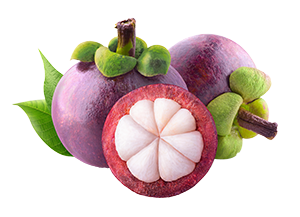Since the launch of Guyamaax, one of the hottest herbal supplements available online and offline now, we’ve been asked many questions about the health benefits that it offers to users. More importantly, what sets this new supplement apart from other supplements with Guyabano (soursop) or Mangosteen? As it turns out, plenty! 😊
Since there are too many to just lump together, we decided to divide those medicinal qualities by ingredient. Scroll down below to see the health benefits that you can get from each of the herb or fruit component of Guyamaax.
Guyabano (Annona muricata)

This fruit first became renown worldwide when the Journal of Natural Products published a scientific research in 1996 that showed Guyabano leaves and stems were effective in attacking and destroying malignant cells. The study further showed that the Guyabano extracts selectively hunts down and kills only cancer cells, unlike chemotherapy that also targets healthy cells.
Aside from that, Guyabano is rich in B-Vitamins, making it an excellent energy booster. Furthermore, this wonder fruit is also known to help with anemia because it is iron-rich, can help prevent constipation due to the presence of large amounts of fiber, and it can also help prevent urinary tract infections because of its Vitamin C content, among others.
Mangosteen (Garcinia mangostana)

A fruit endemic to Southeast Asia, the Mangosteen was banned in the US until 2007 because it was thought to be a carrier of Asian fruit flies. Since the ban was overturned, many have discovered the immense trove of health benefits that this superfood possesses.
Known as the “Queen of Fruits,” the Mangosteen has been used as traditional medicine for various health complications for centuries by Southeast Asians. Research findings have established this superfood as another cancer-fighting food alongside Guyabano and as a fruit that helps combat inflammation and allergies. Also, the Mangosteen can help normalize the blood sugar level of the body according to a study published in the Journal of Agricultural and Food Chemistry.
Turmeric (Curcuma longa)
Another royalty, Turmeric has long been christened as the “Queen of Herbs,” by Indians who have used this herb as spice for their dishes and traditional medicine for numerous ailments.  Like Mangosteen, Turmeric has been discovered as a potent anti-diabetic herb that helps lower the body’s blood sugar level. It also has anti-inflammatory and antibacterial properties, making it effective in helping lower the risk of heart disease, cancer, Alzheimer’s Disease, and other degenerative diseases.
Like Mangosteen, Turmeric has been discovered as a potent anti-diabetic herb that helps lower the body’s blood sugar level. It also has anti-inflammatory and antibacterial properties, making it effective in helping lower the risk of heart disease, cancer, Alzheimer’s Disease, and other degenerative diseases.
Most importantly, Turmeric is bursting to the seams with antioxidants that help protect the body from free radicals. The latter are groups of atoms that damage the body’s cell and DNA.
Vitamin C (Sodium Ascorbate)
A type of Vitamin C, Sodium Ascorbate has the same benefits of Vitamin C but with lower acidity due to the presence of mineral salt. A bound Vitamin C to a mineral salt like sodium makes it easier on the digestive tract. Thus, for starters, consuming Sodium Ascorbate can be very beneficial for people with gastrointestinal problems. Also, according to the Office of Dietary Supplements, Sodium Ascorbate can help with cancer prevention and treatment.
Other than that, Vitamin C is instrumental in good eye health because it helps strengthen capillaries and soft tissues that are found abundantly in the eyes. It can also help ocular blood vessels to function properly.


Recent Comments